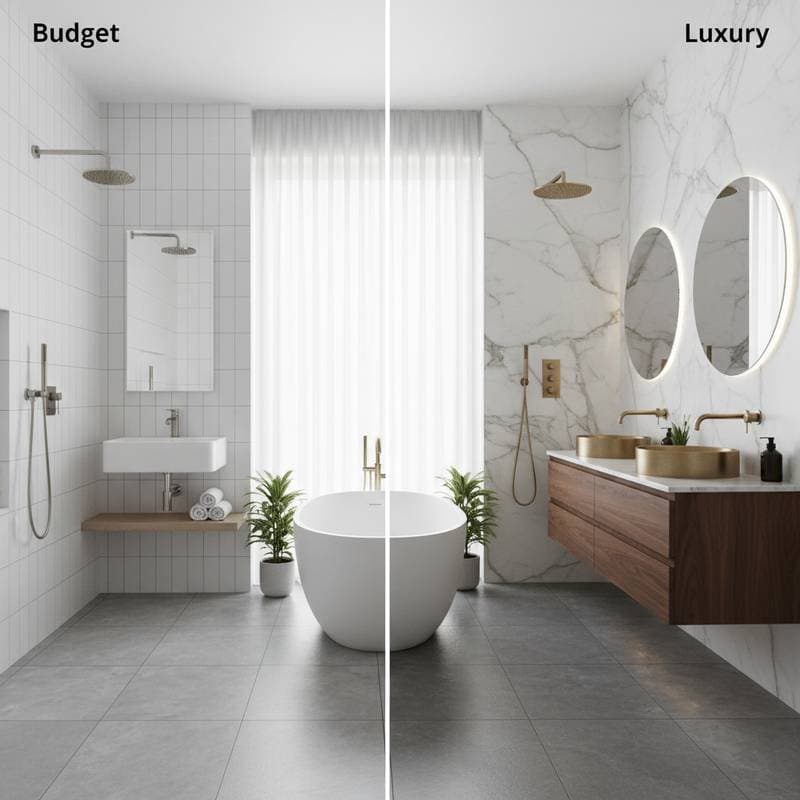2025 Water Heater Comparison: Tank Versus Tankless Systems
Homeowners replacing an aging water heater must weigh options carefully. Traditional tank models store and heat water in a reservoir, while tankless systems heat water on demand. This guide examines 2025 pricing, efficiency, and practical considerations to help select the system that aligns with household needs, budget constraints, and energy objectives.
Upfront Costs and Installation Expenses
Tank water heaters present a lower entry point for most budgets. Expect to pay between $500 and $1,500 for a standard 40- to 50-gallon unit in 2025, depending on capacity and energy source. Installation typically ranges from $500 to $1,000, as these systems often integrate with existing plumbing and venting setups, minimizing modifications.
Tankless water heaters demand a greater initial outlay. Units suitable for average households cost $800 to $2,500, with whole-home models reaching $3,000 or more for high-flow needs. Installation fees can add $1,000 to $3,000, particularly if upgrades to gas lines, electrical panels, or venting are required. Professional assessment ensures compatibility and avoids unexpected expenses.
Suggested image: Side-by-side comparison of a traditional tank water heater and a wall-mounted tankless unit in a utility space, with alt text: Visual comparison of tank and tankless water heaters in a home utility room.
Maintenance Requirements and Expected Lifespan
Tank water heaters generally operate for 8 to 12 years under normal conditions. Annual flushing removes sediment that impairs efficiency, while replacing the anode rod every 3 to 5 years prevents tank corrosion. These steps maintain consistent performance and can add years to the system's life.
Tankless models offer extended durability, often lasting 15 to 20 years with routine care. Descaling every 1 to 2 years clears mineral buildup, especially in hard water areas; this process involves flushing with a vinegar solution or professional service. Although individual maintenance visits cost $200 to $500, the reduced frequency and longer service life balance the investment over time.
Suggested chart: Bar graph illustrating average lifespan (tank: 10 years; tankless: 18 years) and annual maintenance costs (tank: $100; tankless: $150), with alt text: Chart comparing water heater lifespan and maintenance expenses.
Space Efficiency and Installation Flexibility
Space limitations often tip the scales in favor of tankless systems. These compact units, measuring about 18 by 24 inches, mount on walls or fit into cabinets, reclaiming valuable floor area in utility rooms or closets. In regions with moderate temperatures, outdoor installation further optimizes indoor space.
Tank heaters, by contrast, occupy 2 to 3 square feet of floor space due to their cylindrical design. Placement requires clearance for ventilation and access, which poses challenges in tight urban apartments. However, for families with high simultaneous hot water demands, the tank's reserve capacity provides uninterrupted supply during busy mornings.
Addressing Key Homeowner Concerns
Can a tankless water heater support simultaneous showers and appliances? Proper sizing addresses this effectively. Evaluate flow rates in gallons per minute (GPM); a 7 to 9 GPM unit handles two to three fixtures at once. Consult a plumber to match capacity with peak usage patterns.
Is retrofitting tankless systems feasible in older homes? Compatibility exists in many cases, but assessments reveal needs like larger gas pipes or circuit upgrades. Budget an extra $500 to $1,500 for adaptations, which enhance safety and performance.
When does a tank heater make sense today? It suits modest households with budgets under $2,000 total. Opt for Energy Star-rated models featuring enhanced insulation to cut standby losses by up to 20 percent.
Insights from Homeowner Experiences
Renovation communities highlight varied outcomes. Users frequently report tankless systems delivering continuous hot water, with monthly energy savings of 20 to 30 percent in moderate climates. Initial costs, however, extend payback periods to 5 to 10 years for low-usage homes.
In larger residences, tank systems prove reliable for heavy demands, avoiding flow reductions during peak times. One forum contributor noted a 50-gallon tank sufficed for a family of five, with total costs recouped faster than expected through stable utility rates.
Industry professionals emphasize lifetime cost analysis. Calculate expenses over 15 years, factoring in energy rates projected at $0.15 per kilowatt-hour and natural gas at $1.50 per therm in 2025. This method reveals tankless advantages in efficiency, potentially saving $300 to $500 annually.
Quick Reference: Advantages and Drawbacks
Tank Water Heater
- Initial purchase and setup under $2,500
- Simple integration with standard home infrastructure
- Limited to 8-12 years of service
- Higher standby energy consumption
- Requires substantial floor space
Tankless Water Heater
- Upfront total often exceeds $3,000
- Endures 15-20 years with maintenance
- Sleek, space-saving profile
- On-demand heating reduces waste by 24-34 percent
- Potential for costly infrastructure changes
Steps to Select and Install Your System
Begin by auditing hot water usage: track daily showers, laundry cycles, and dishwashing to estimate gallons needed, typically 50 to 80 per person. Compare against current energy statements to project savings; tools like online calculators assist without professional fees.
For budget-focused choices, prioritize tank models with superior insulation. Those seeking sustainability invest in tankless, verifying rebates from utility providers that offset 10 to 20 percent of costs.
Engage certified installers early for site evaluations. Annual upkeep, including valve tests and pressure relief checks, safeguards reliability. These preparations secure efficient, enduring hot water tailored to your home's rhythm.





